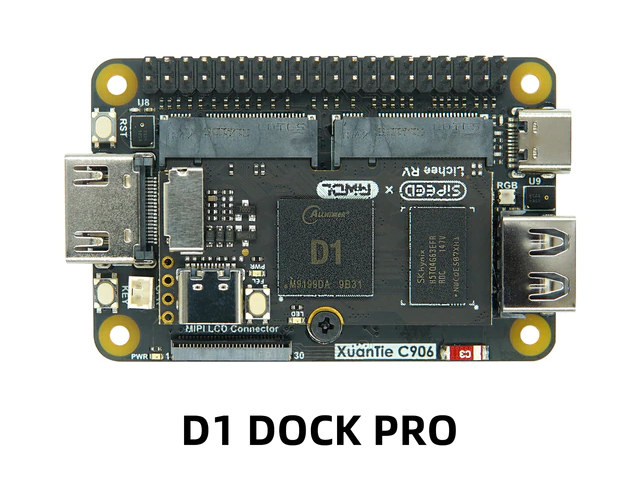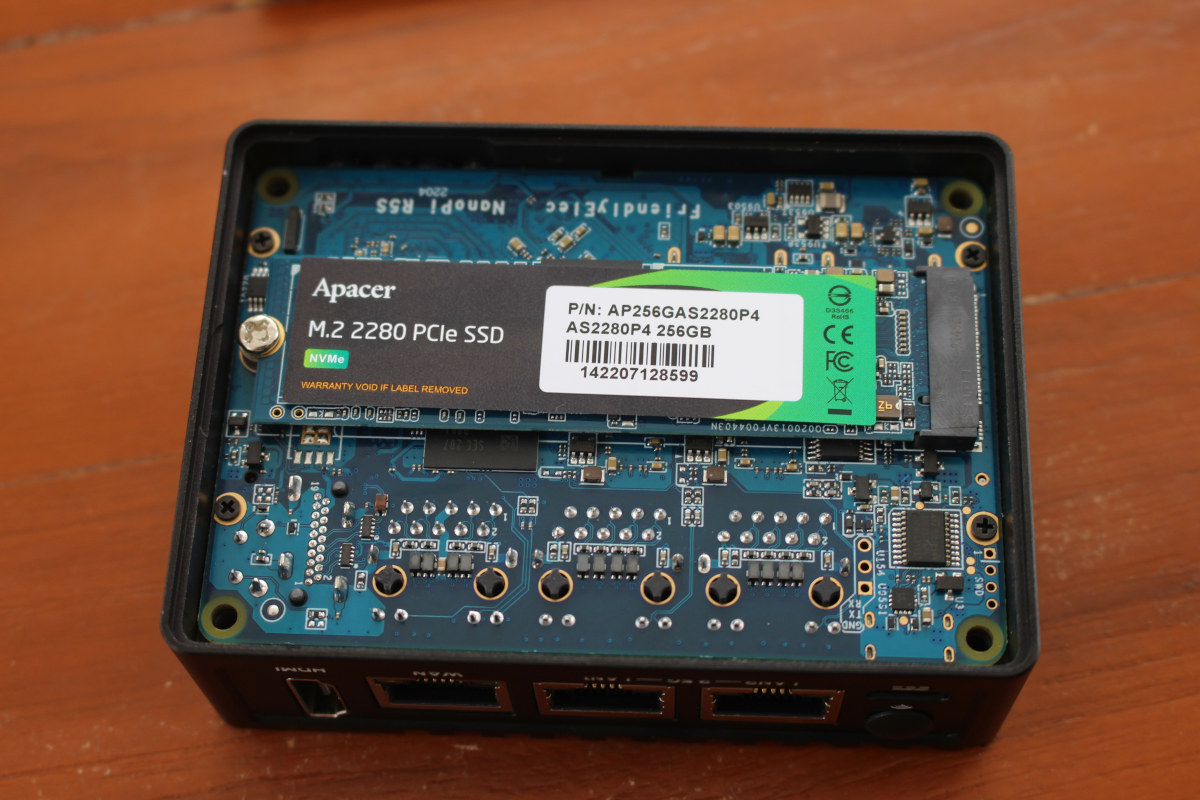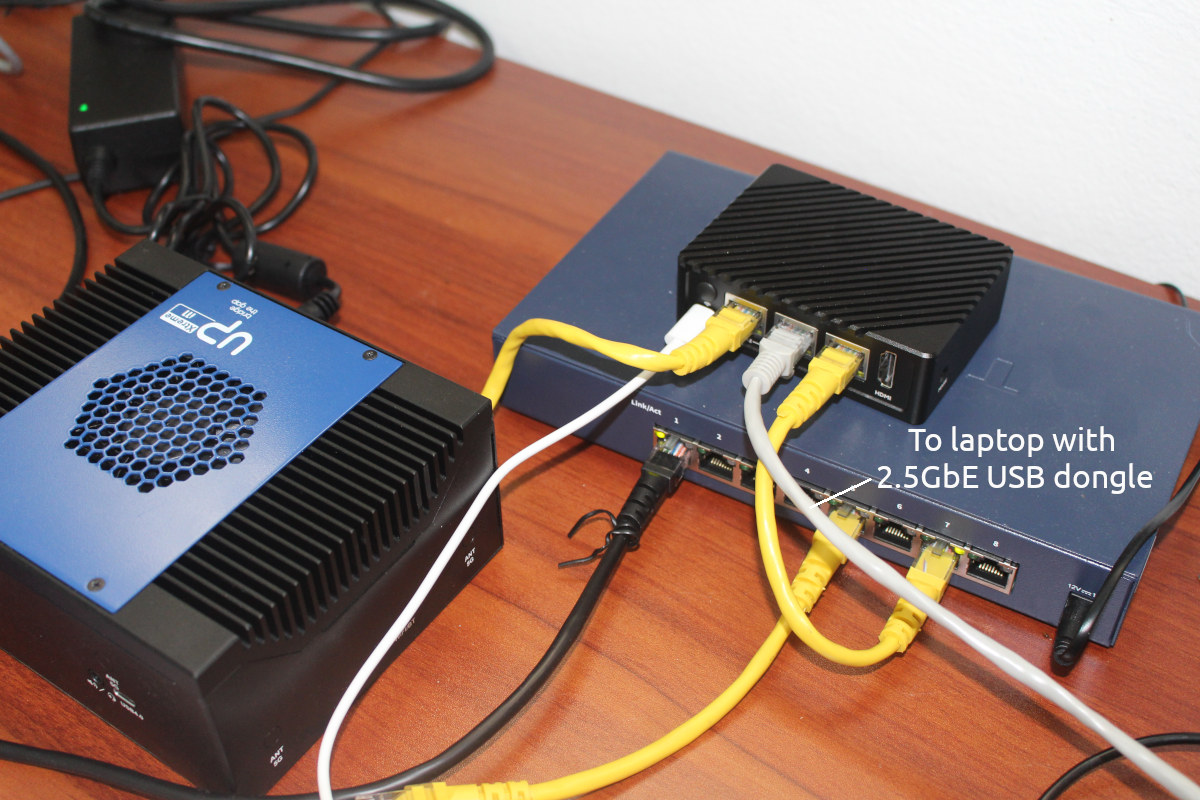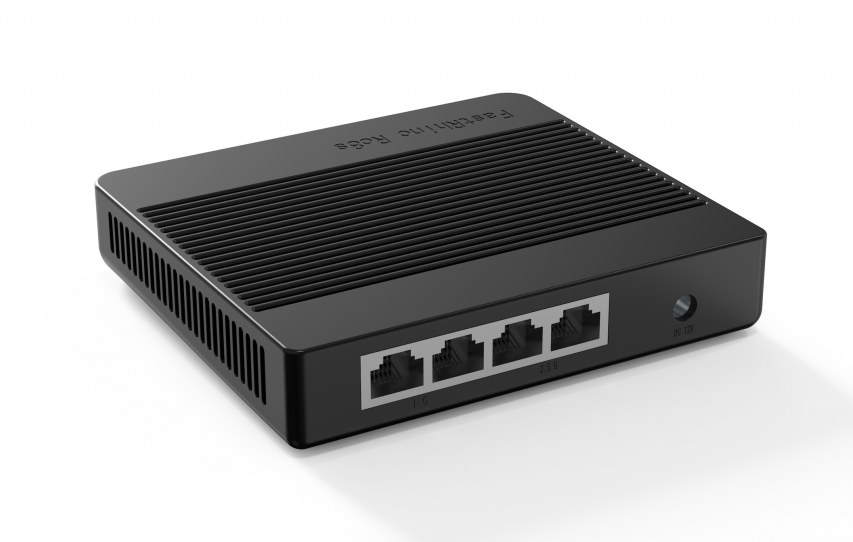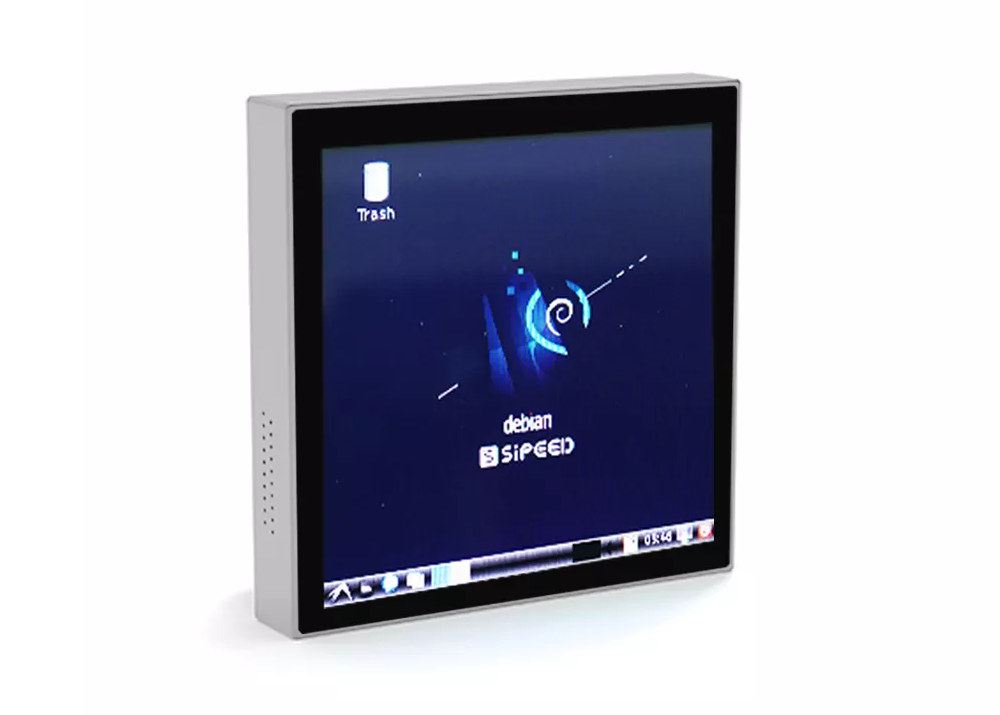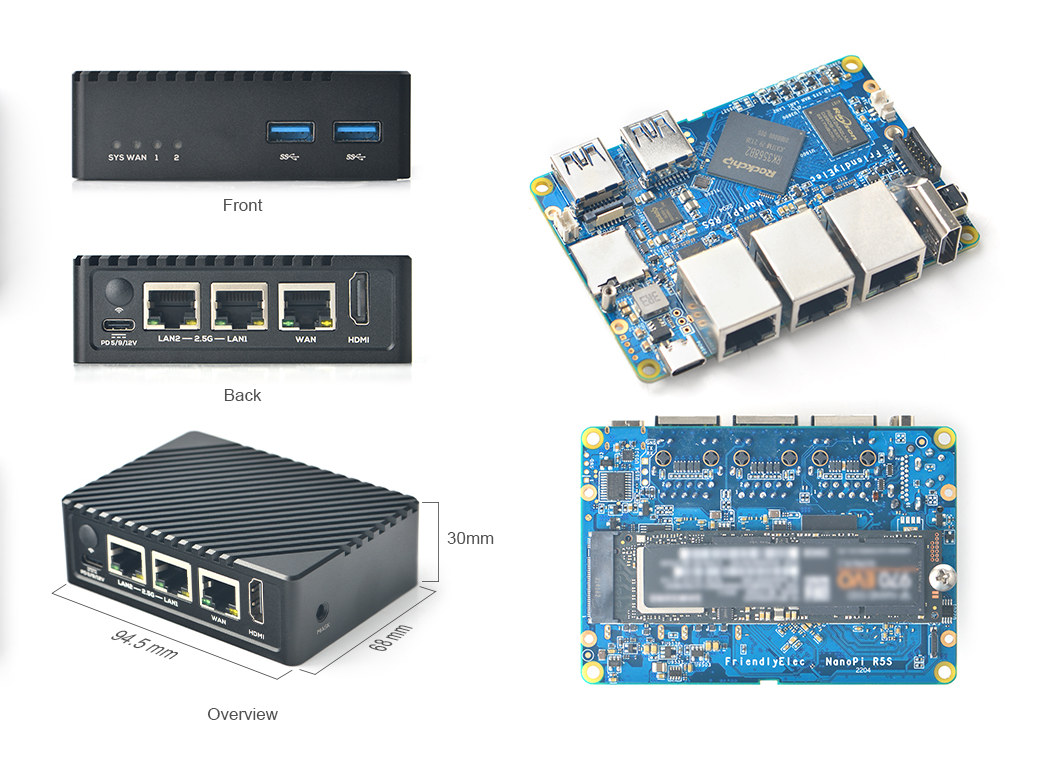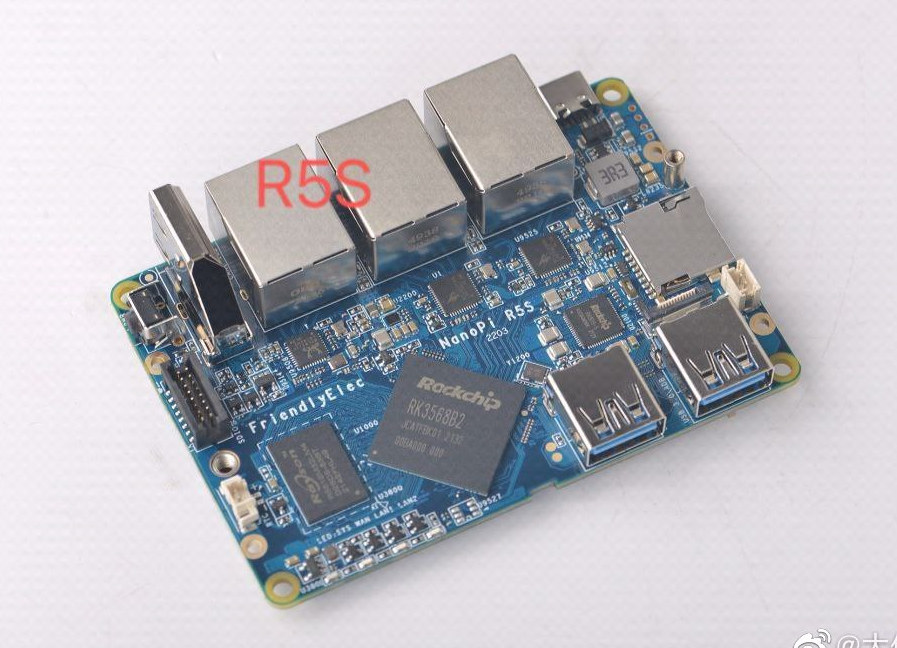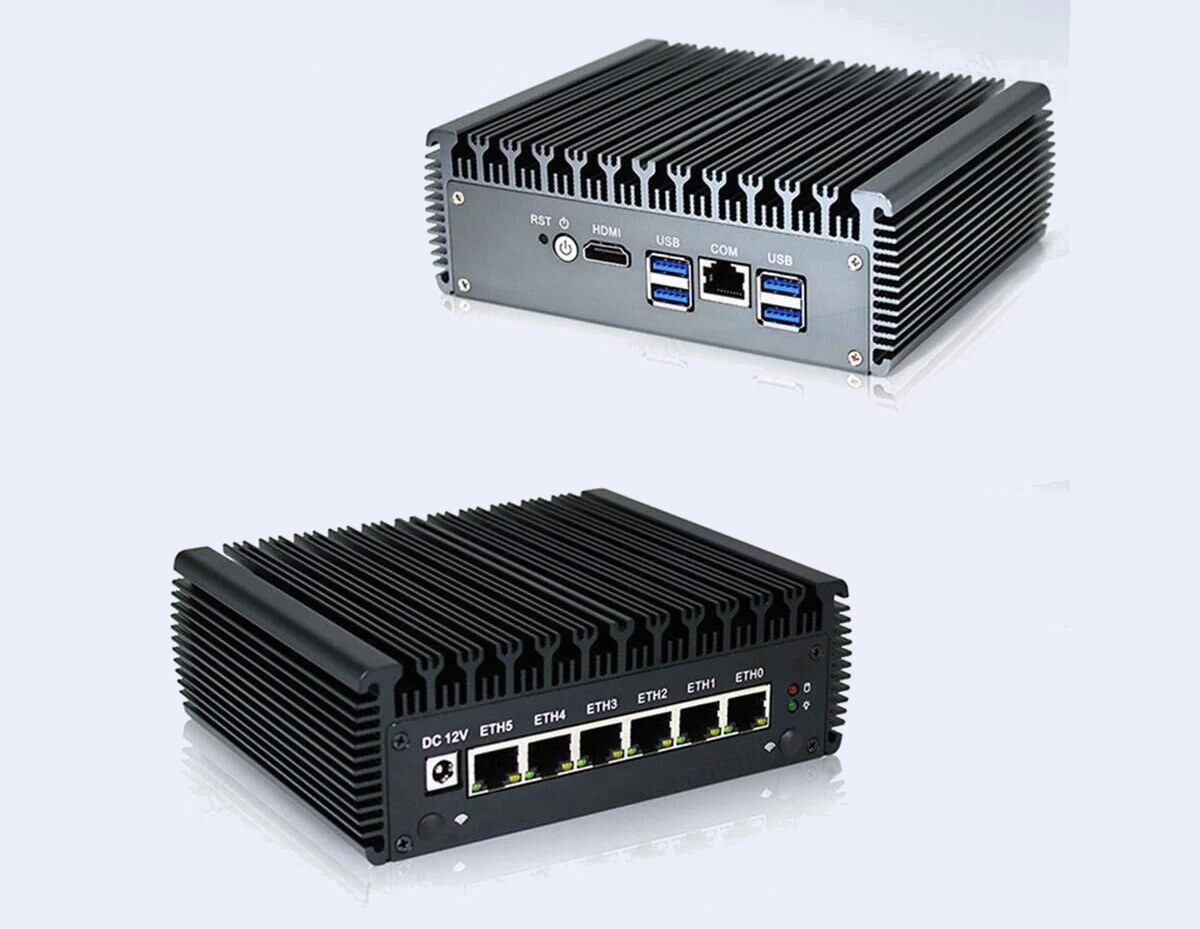Sipeed has launched the Lichee RV Dock Pro kit for the company’s Lichee RV Allwinner D1 RISC-V module that builds on the earlier Lichee RV Dock carrier board and adds a MIPI/RGB LCD connector, two built-in microphones, as well as an on-board JTAG+UART debugger based on Bouffalo Lab BL702 microcontroller. Lichee RV Dock Pro specifications (preliminary) which changes in bold or strikethrough: Supported system-on-module (SoM) – Lichee RV module with Allwinner D1 RISC-V processor @ 1 GHz, 512MB DDR3, MicroSD card slot, and USB Type-C OTG port Storage – Optional SPI flash Display interfaces HDMI port up to 4Kp30 MIPI LCD/RGB interface for up to 720p30 display Audio – 3W power amplifier, 2x analog microphone, support for 6-mic array via expansion Connectivity – WiFi 4 and Bluetooth 4.2 via Realtek RTL8723 wireless module with ceramic antenna, IPEX antenna connector USB – 1x USB Type-A port adding to the USB-C OTG […]
NanoPi R5S preview – Part 2: Ubuntu 20.04 (FriendlyCore)
I started the NanoPi R5S review with an unboxing, a teardown, a quick try of the pre-installed OpenWrt-based FriendlyWrt, and some iperf3 benchmarks on the 2.5GbE interfaces that were rather disappointing. I test further I switched to the Ubuntu 20.04-based FriendlyCore image since I’m more familiar with Debian-based operating systems, and some tools will not run on OpenWrt. Note the performance is still not quite optimal, and that’s why I call this a preview since numbers should improve in the next few months as more people tweak the software. OpenWrt optimizations? But before jumping to Ubuntu, I gave an updated version of FriendlyWrt a try as FriendElec told me they had added some optimizations: We have made some optimizations on the new image, such as NIC interrupt settings, and offload support… So I downloaded “rk3568-eflasher-friendlywrt-20220526.img.gz” found on Google Drive, flashed it to a microSD card with USBImager, and booted it […]
NanoPi R5S router review – Part 1: Unboxing, OpenWrt, and iperf3 benchmarking
FriendlyElec has just launched the NanoPi R5S mini router powered by a Rockchip RK3568 processor, and the company kindly sent me two samples for review. In the first part of the review, I’ll check out the device itself, the internal design, the preinstalled OpenWrt, and run some networking benchmarks with iperf3. NanoPi R5S unboxing The router comes fully assembled together with a 3M sheet with 6 rubber feet, which, as we’ll see below, are not really necessary. A microSD card socket can be found on one of the sides, while the rear panel comes with a USB-C port for power, a WiFi antenna hole (which can also be used to run cables for GPIO. UART console, etc…), two 2.5GbE RJ45 LAN ports, a Gigabit Ethernet WAN port, and HDMI video output. We’ll find a Mask button for firmware flashing on the other side, and the front panel features four […]
FastRhino R68s router offers 4GB RAM, dual 2.5GbE, dual Gigabit Ethernet for $80 (in China)
Rockchip RK3568-powered NanoPi R5S router has gotten a direct competitor courtesy of FastRhino R68s with the same processor, but more memory up to 4GB RAM, two 2.5GbE ports, and two Gigabit Ethernet ports (or one extra compared to R5S), and two USB 3.0 ports. FastRhino R68s is purely a router in the traditional sense, and you don’t get an HDMI port acting as a display interface or an M.2 NVMe socket to add extra storage as found in NanoPi R5S. The plastic enclosure used with R68s will not be able to cool the Rockchip RK3568 as well as the metal enclosure of the FriendlyElec device, but there are plenty of ventilation holes so that may be sufficient. FastRhino R68s specifications: SoC – Rockchip RK3568 quad-core Cortex-A55 processor @ up to 2.0 GHz with Arm Mali-G52 MP2 GPU, 0.8 TOPS AI accelerator, 4Kp60 H.265/H.264/VP9 video decoder, 1080p60 H.264/H.265 video encoder System […]
Lichee RV-86 RISC-V Linux 4-inch panel targets home automation, HMI applications
When Sipeed first introduced the Lichee RV module with Allwinner D1 RISC-V SoC last November, they also teased the Lichee RV-86, an “86 Box” with a 4-inch 480×480 touchscreen display, an XR829 WiFi and Bluetooth module, Ethernet (via USB), two microphones, a GPIO header, and support for WAFT (WebAssembly Framework for Things). I’ve just noticed the Lichee RV-86 has been for sale for several months, so it may be interesting to have a closer look, and now there’s also an option to get a 720×720 touchscreen display. Lichee RV-86 specifications: SoM – Sipeed Lichee RV Nezha compute module with Allwinner D1 RISC-V processor @ 1 GHz, 512MB or 1GB DDR3, microSD card slot, and USB Type-C OTG port Display 4-inch 480×480 IPS capacitive touch screen OR 4-inch 720×720 IPS capacitive touch screen It is also possible to connect an 8-inch 1280*800 IPS capacitive touch screen to the board Audio – […]
NanoPi R5S Rockchip RK3568 mini router launched for $59 and up
The Rockchip RK3568-powered NanoPi R5S SBC with two 2.5GbE ports, one Gigabit Ethernet port, and M.2 NVMe storage is now available for $59, or $75 with a metal enclosure. As previously mentioned, the mini router board is equipped with 2GB RAM, 8GB eMMC flash, two USB 3.0 ports, as well as an HDMI output for people wanting to make use of the Rockchip RK3568 processor’s multimedia capabilities, or simply have a user interface on a monitor. NanoPi R5S specifications: SoC – Rockchip RK3568 quad-core Cortex-A55 processor @ up to 2.0 GHz with Arm Mali-G52 MP2 GPU, 0.8 TOPS AI accelerator, 4Kp60 H.265/H.264/VP9 video decoder, 1080p60 H.264/H.265 video encoder System Memory – 2GB LPDDR4X Storage 8GB eMMC flash for OS Key M socket for M.2 2280 (PCIe 2.0 x1) NVMe SSD support Optional SPI flash for network boot MicroSD card socket Video Output – 1x HDMI 2.0 port up to 4Kp60, […]
NanoPi R5S router SBC/gateway with 2x 2.5GbE, 1x Gigabit Ethernet, M.2 NVMe storage coming soon
FriendlyELEC’s family of NanoPi router SBCs and gateways will soon be extended with the NanoPi R5S board equipped with a Rockchip RK3568 quad-core Cortex-A55 processor, and providing three Ethernet ports (2x 2.5Gbps, 1x 1 Gbps), plus support for M.2 NVMe SSD storage. The company has not published any information publicly, but a post on Weibo social network reveals additional details with the single board computer being equipped with 2GB LPDDR4X, 8GB eMMC flash, two USB 3.0 ports, HDMI video output, and more. NanoPi R5S preliminary specifications: SoC – Rockchip RK3568B2 quad-core Cortex-A55 processor @ up to 2.0 GHz with Arm Mali-G52 MP2 GPU, 0.8 TOPS AI accelerator (RK3568B2 comes in a “plastic package” instead of the “metal-can type package” found on RK3568, but the features are the same) System Memory – 2GB LPDDR4 Storage 8GB eMMC flash for OS Key M socket for M.2 2280 NVMe SSD support Optional SPI […]
Compact fanless firewall appliance offers 6x 2.5GbE ports for $230 and up
KingNovy has introduced a small fanless firewall appliance powered by an Intel Celeron J4125 Gemini Lake Refresh processor, equipped with six 2.5GbE ports through Intel i225-V Rev 3 Ethernet controllers, and selling for as low as $230 for the barebone model. The system supports up to 32GB RAM, mSATA and 2.5-inch SATA storage, features HDMI output and four USB 3.0/2.0 ports, plus an RJ45 console port, and is said to work with pfSense 2.5.x, OPNsense 22.1, OpenWrt, ROS7, ESXI, Proxmox, CentOS, and more. Specifications: SoC – Intel Celeron J4125 quad-core Gemini Lake Refresh processor @ 2.0 / 2.7 GHz (Turbo) / 2.4 GHz (Turbo all cores) with Intel UHD Graphics 600 @ 250/750 MHz; 10W TDP System Memory – Dual-channel Memory DDR4 (2400MHz) supporting up to 32GB RAM in total Storage – 1x mSATA socket, 2.5-inch SATA bay for SSD or HDD Video Output – HDMI 2.0 up to 4K […]


